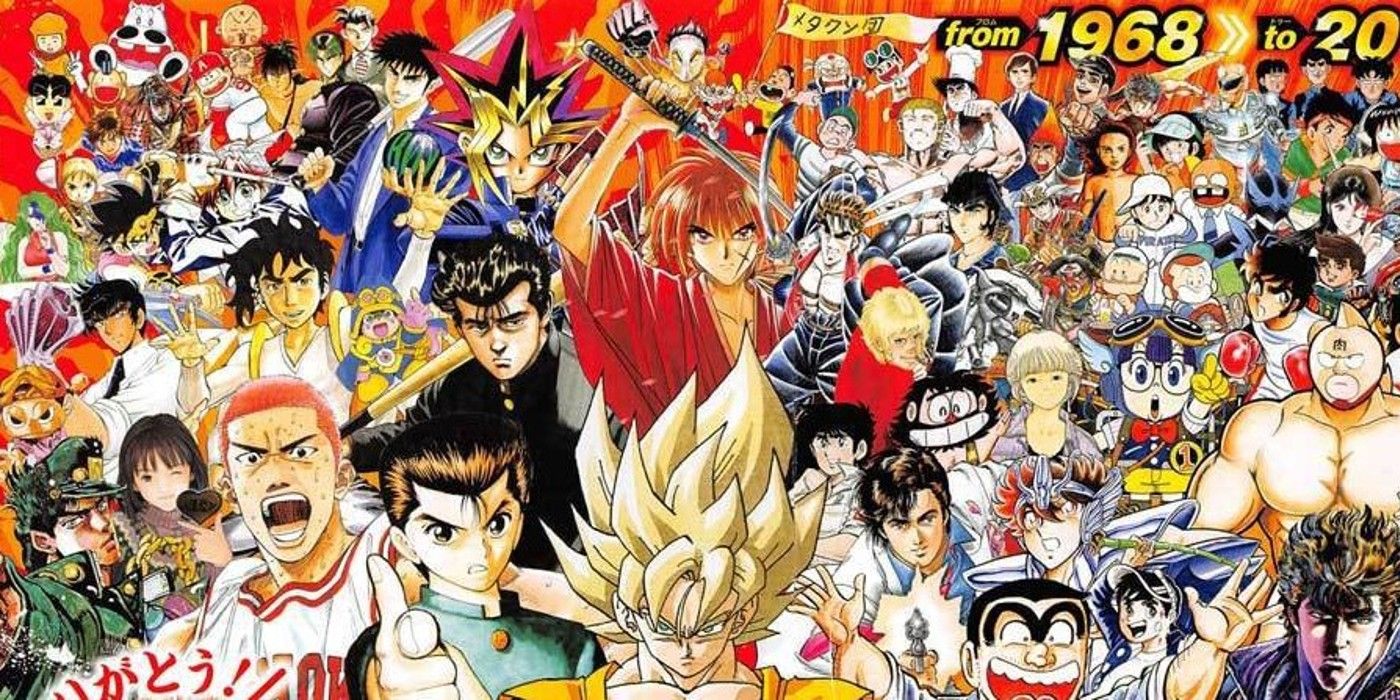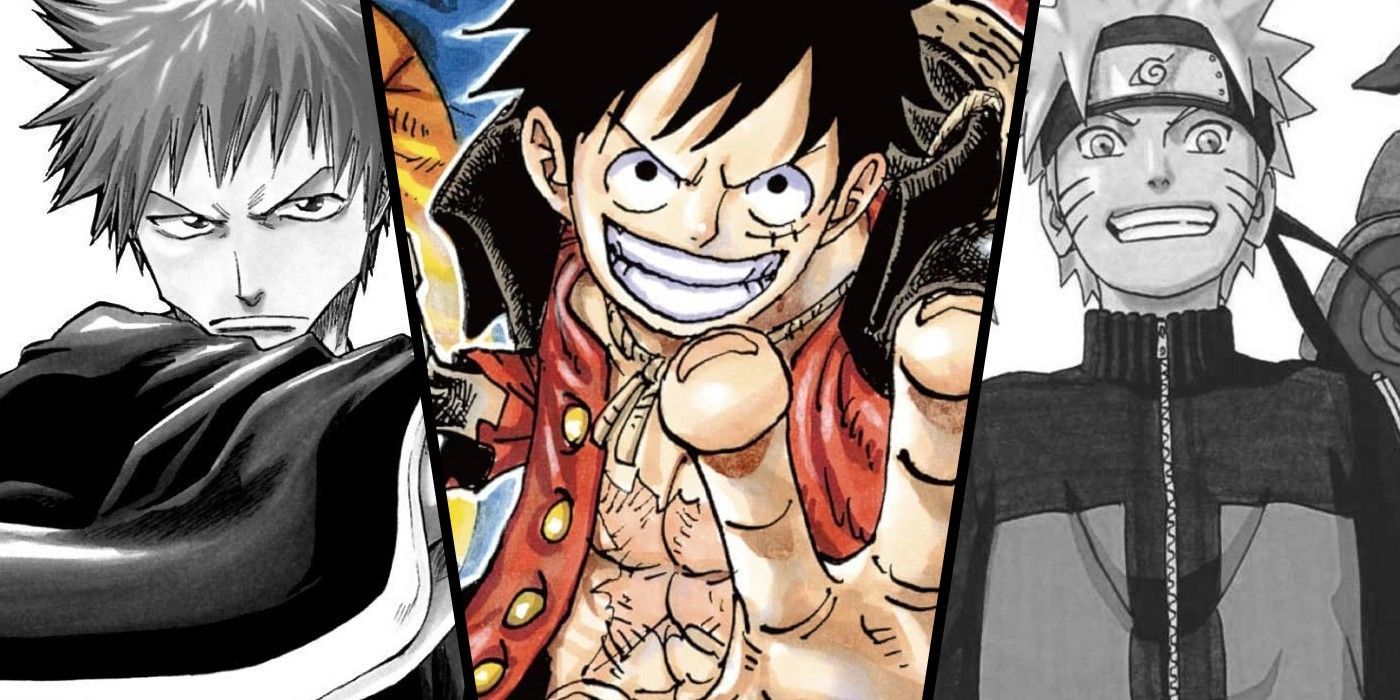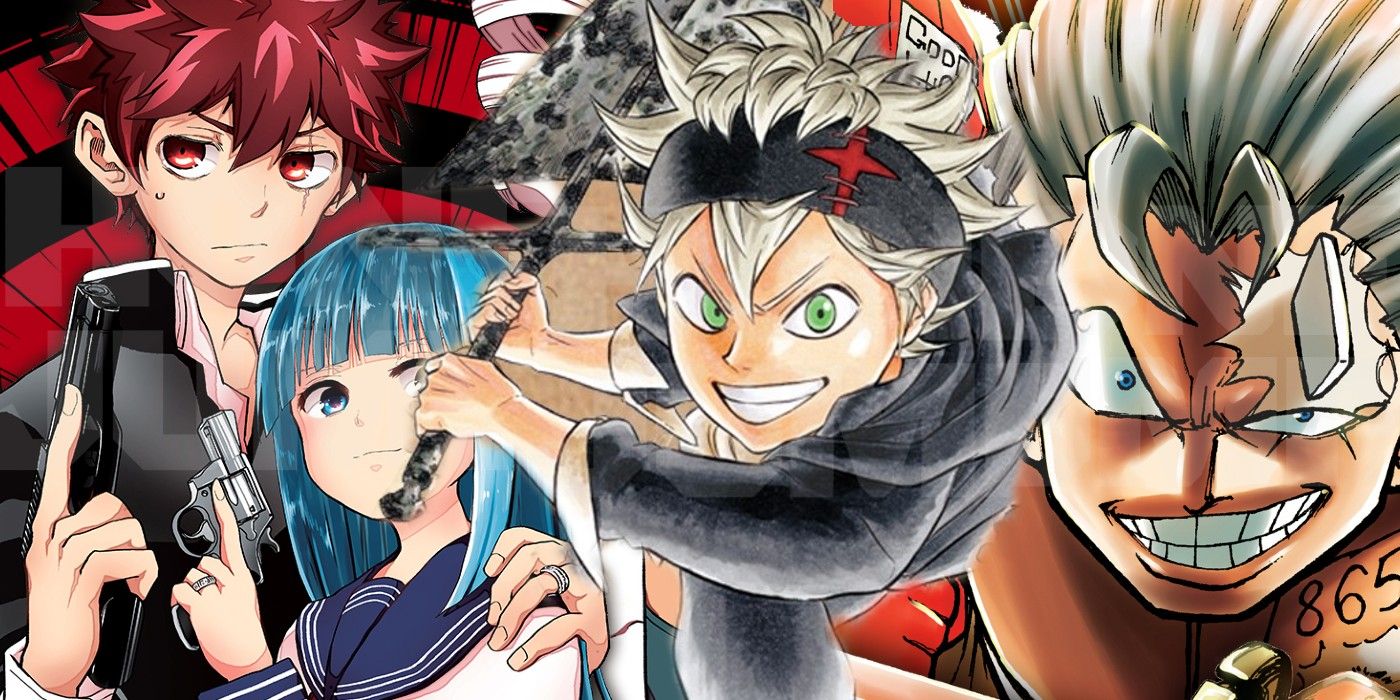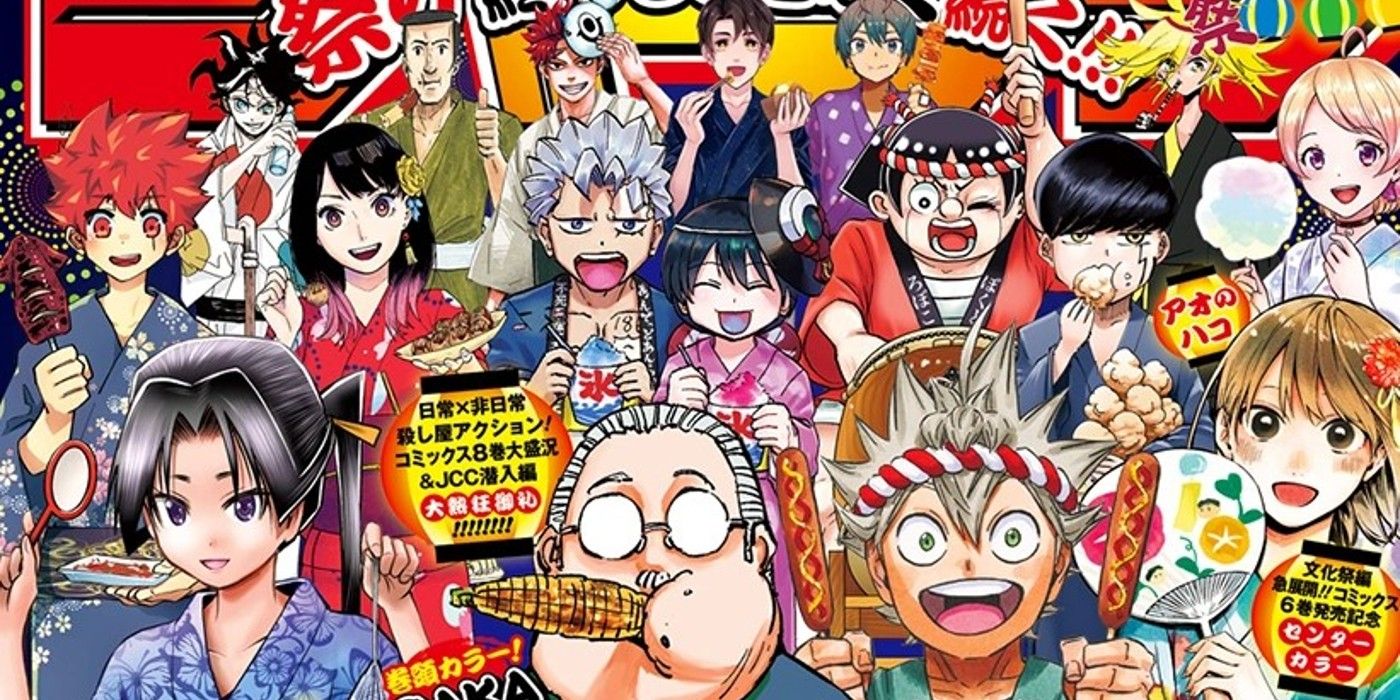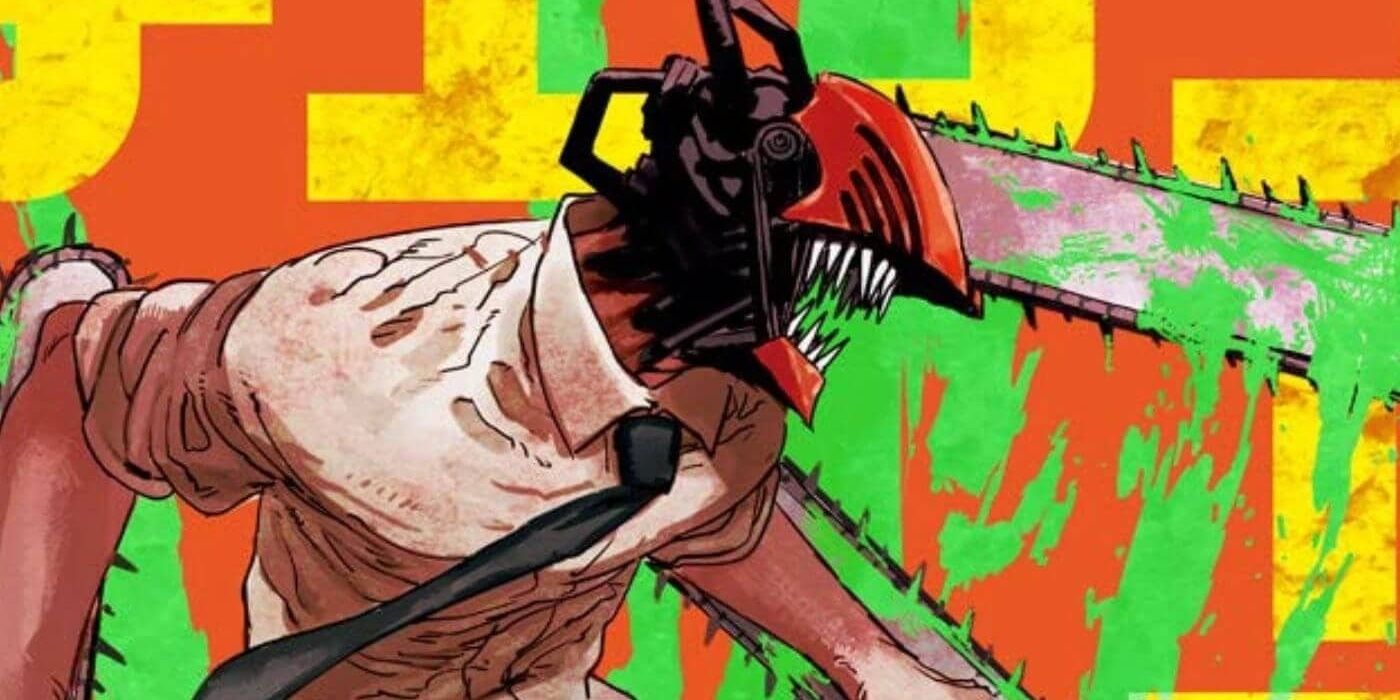The iconic manga magazine Weekly Shonen Jump is on track to setting a depressing new milestone, which puts into question the very future of the publication. In late August, it was reported that 2022 is on track to be the year in which Shonen Jump has serialized the least amount of series since 2010. While new information has made this statistic potentially less dire, it is still a shockingly low number given the magazine’s current need for new flagship series.
Weekly Shonen Jump is one of Japan’s most popular manga magazines. The magazine has been around since the late 1960s, but it only reached its peak of popularity in the 1990s, when it contained such extremely popular and iconic series like battle manga Dragon Ball and sports manga Slam Dunk. When those series ended, the magazine entered a period of decline until the mid 2000s. At that point the magazine was serializing One Piece, Naruto, and Bleach, commonly known as the “Big Three.” These series were and still are immensely popular. All three were still ongoing during 2010, meaning that Shonen Jump didn’t really need to grab new readers to ensure its continued success at that time. The magazine’s current lineup of series is much different from how it was back then, however.
On August 22, the Twitter account Shonen Salto tweeted that so far only five series had been serialized in Weekly Shonen Jump this year. Since that was reported, one new series has begun with another set to begin on September 12, but it is still the fewest new series to begin serialization since 2010, when only eight new series graced the magazine's pages. The new manga to begin serialization are Akane-banashi, Earthchild, Super Smartphone, Aliens Area, RuriDragon and Tokyo Demon Bride Story, with Ginka to Ryūna still scheduled to premiere.
The Modern Big Three
While One Piece is currently still ongoing, Naruto and Bleach both ended more than 5 years ago. The magazine has had a variety of series since then that have acted as adequate substitutes for these flagship series. My Hero Academia, Demon Slayer, and Jujutsu Kaisen have all grown incredibly popular both in Japan and internationally, with Demon Slayer even outselling One Piece in 2019 after its superb anime adaptation. However, Demon Slayer ended in 2020 after only 4 years of serialization, preventing it from becoming a flagship series Jump can rely on to draw in more readers. As such, the “Modern Big Three” is now often thought of as consisting of One Piece, My Hero Academia, and Jujutsu Kaisen. But if Shonen Jump is relying on those manga as its flagship series, then it likely won’t be able to depend on them for much longer.
One Piece recently announced that the 25-year-old series is now entering its final saga, and Kohei Horikoshi, the author of My Hero Academia, has announced that he plans on ending the series by the end of 2022. Of course, these announcements may just be wishful thinking on behalf of the two mangaka. My Hero Academia is in its final arc, but there are still a myriad of plot threads that need to be resolved before the series ends, making a 2022 end date seem unlikely. And Eiichiro Oda, the author of One Piece, has been saying the series would end soon for the past 20 years. But if these series do wrap up soon, then Shonen Jump will need to find similarly grand long-running series to replace them, or else face a decline in readers similar to when Dragon Ball ended in the 1990s.
Potential Replacements
One of the potential options for a flagship series would be Black Clover, a manga taking after Naruto in many respects that currently has more than 300 chapters. However, that series announced that it would also be entering its final arc around the same time One Piece did, so that isn’t a very viable option. Looking at the other series in Jump at or above 100 chapters in length, three of them (Mashle: Magic and Muscles, Me & Roboco, and High School Family: Kokosei Kazoku) are comedy manga that can’t really fit the void left by more dramatic series. The other two are Mission: Yozakura Family and Undead Unluck, which, while having some comedic elements, are much more serious. Mission: Yozakura Family is a manga focusing on a family of spies, which is unfortunately a bit too similar to the vastly more popular Spy x Family to allow the series to truly stand out. And Undead Unluck is just a bit too offbeat to appeal to the broad audience that Shonen Jump desperately needs to appeal to.
Of course there are a variety of newer series with fewer chapters that have some potential. Sakamoto Days is a manga with 83 chapters that has comedic undertones, but has also featured some more serious fights and plots. The Elusive Samurai is a historical battle manga with a respectable 74 chapters created by veteran mangaka Yusei Matsui, who previously wrote the hit series Assassination Classroom. Either of these series feel like they have the potential to grow into popular series, but only time will tell what directions they will take and how much Shonen Jump will put their weight behind promoting them. While each of these series have promise, neither are the breakthrough series that Jump needs in order to have manga big enough to replace My Hero Academia or One Piece. But the way the publisher has been treating its newer series doesn’t seem conducive to finding these sorts of manga.
Jump's Other Series
Most of Shonen Jump’s other series are either comedies or series that, while good, are too niche to appeal to Jump’s broader fan base. For instance, Jump has been recently promoting the excellent manga Akane-banashi, which even has Oda’s stamp of approval. But the series heavily focuses on the obscure Japanese performance art of Rakugo, which is unlikely to attract a large audience of readers despite how superb the series is. And Akane-banashi, like many other Jump manga, is still on the newer side, as the magazine has been ruthlessly ending series before they really have the time to find their footing. In fact, Shonen Jump recently announced that it will be ending Doron Dororon, and another series Earthchild seems to be ending soon as well. Both of these series have less than 40 chapters, which represents less than a year of serialization. This sort of premature cancelation has unfortunately become increasingly common in an industry that has become less forgiving to newer series as competition has grown.
Shonen Jump is generally quick to replace the manga it axes with new series, and it will soon be adding two new titles to replace the ones it is disposing of. But this constant cycle of cancelation and replacement makes it hard for readers to truly grow attached to new series, as they may be canceled at any time. Weekly Shonen Jump has stopped serializing five manga this year so far, which perfectly matches the amount of new manga it started serializing this year. This makes the low number of new manga series they have released even more depressing. Even with its two new upcoming series bringing the total number of new serializations up to seven, that still is lower than Jump’s all-time low, but knowing that the magazine has essentially gone net-zero in series count is not a good sign for a magazine that is already struggling. And to make matters worse, it seems that this is all partly by design.
The Jump+ Problem
The most recent breakout series that Weekly Shonen Jump serialized was Chainsaw Man. The series was explosively popular, and part 1 was serialized entirely in Weekly Shonen Jump. However, when Chainsaw Man’s second part returned this year, it ran in Shonen Jump+, an online magazine also owned by Weekly Shonen Jump’s parent company Shueisha. Shonen Jump+ (known outside Japan as MANGA Plus) has featured some of the most popular manga series of recent years, including the aforementioned Spy x Family and the groundbreaking Kaiju No. 8. Digital platforms like this are often more convenient to read on and more accessible to an international audience, so it makes sense that Shueisha would want to focus more on the app’s development than on its print magazine. Chainsaw Man’s transfer to Shonen Jump+ signals that Shueisha is willing to actively harm Weekly Shonen Jump’s chances of success in order to increase the success of its spin-off.
Things look dire for the fate of Weekly Shonen Jump. Being on the brink of setting a record for the lowest amount of new serializations ever this year makes it unlikely that the magazine will be able to find a new flagship series to support it going forward. And even if it does, that new series is then likely to be transferred to Shonen Jump+. Of course if Weekly Shonen Jump fails in order to let Shonen Jump+ succeed, fans will still be able to have access to the series they love, but it would signal the end of an industry giant and likely usher in a new era of manga.
Source: Shonen Salto

